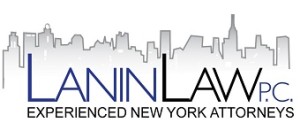Intro to Chapter 13 Bankruptcy and the Budget – It Can Stop Foreclosure
    Chapter 13 bankruptcy. What is it? Basically a repayment plan that consolidates your unsecured debts (like credit cards) and gives you 3 to 5 years to pay them off. Mortgages, however, are not paid in full in Chapter 13. Rather, they are reinstated.  What does this mean? Well, when the mortgagee declares a default and commences a foreclosure action, it accelerates the full indebtedness – so that the borrower owes not only the arrears (the missed monthly payments), he or she now must repay the entire loan, principal, arrears, and all. This also means paying the mortgagee’s legal fees – most homeowners don’t realize right away that they are actually paying their lender’s lawyers to sue them. Lenders pay their lawyers and tack the fees on to the balance due. This continues until the borrower does something to stop it. Other charges that accrue include taxes and insurance payments made by the lender to preserve the property.
    By filing, Chapter 13, a New York debtor can de-accelerate the loan and reinstate by paying the arrears and other charges in the monthly plan payments for 3 to 5 years, without the lender’s consent. This is a powerful tool. Â
    To qualify you must have “regular income.” Chapter 13 is not for the unemployed. This makes sense since you need income to fund the repayment plan.  The key question for most people goes beyond this. Not do they have income, but do they have enough. This refers to Bankruptcy Schedules I and J, which some bankruptcy practitioners call the “budget.” Experienced attorneys know how to review their clients’ monthly income and expenses to see if there is a surplus. Simply put, there must be enough income to cover the recurring monthly expenses, any post-petition mortgage payments (which are made directly to the lender during Chapter 13), any taxes expected to come due during the case, post-petition car payments, if any, plus, after all that, there must be something left over to pay the Chapter 13 trustee enough to fund the plan. It is these payments that the trustee will use to pay the mortgagee the reinstatement amount and any pro rata payment to unsecured creditors like credit cards.Â
    Credit cards are not always paid 100% and in some cases clients are pleasantly surprised that they now can actually afford to reinstate the mortgage (even if their lender refused to cooperate) while saving money at the same time. In some cases, the savings more than offsets the legal fees for their attorney’s services, so, in effect, those services are effectively free to the client. Each case is different and there are many issues that a budget analysis can raise. Some Judges look for different things when scrutinizing the budget, but the underlying issue is always “feasibility.” This means that it must be realistic. Not pie in the sky. A good attorney should review the client’s budget before filing the petition with the court to start the case.Â
